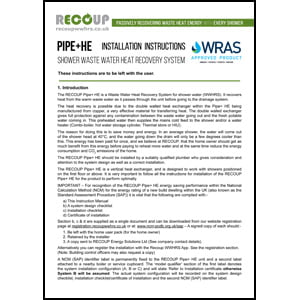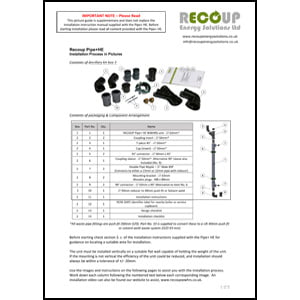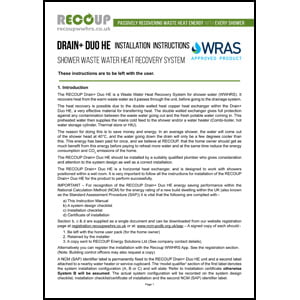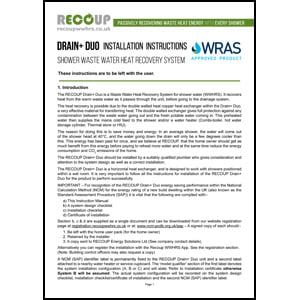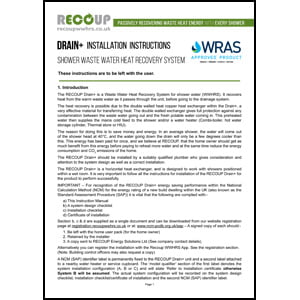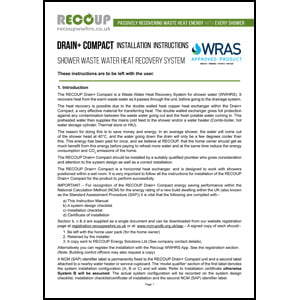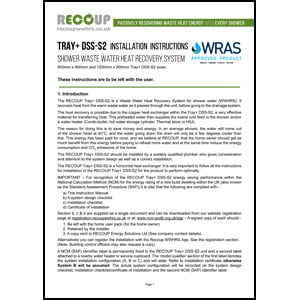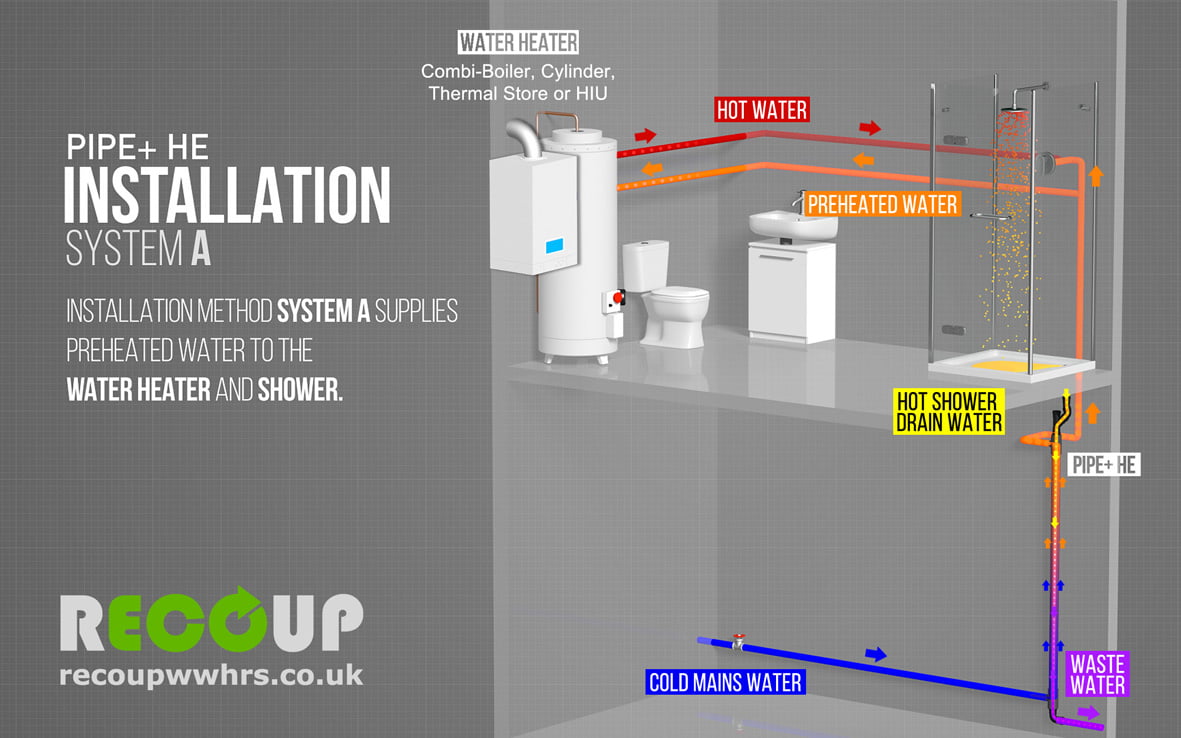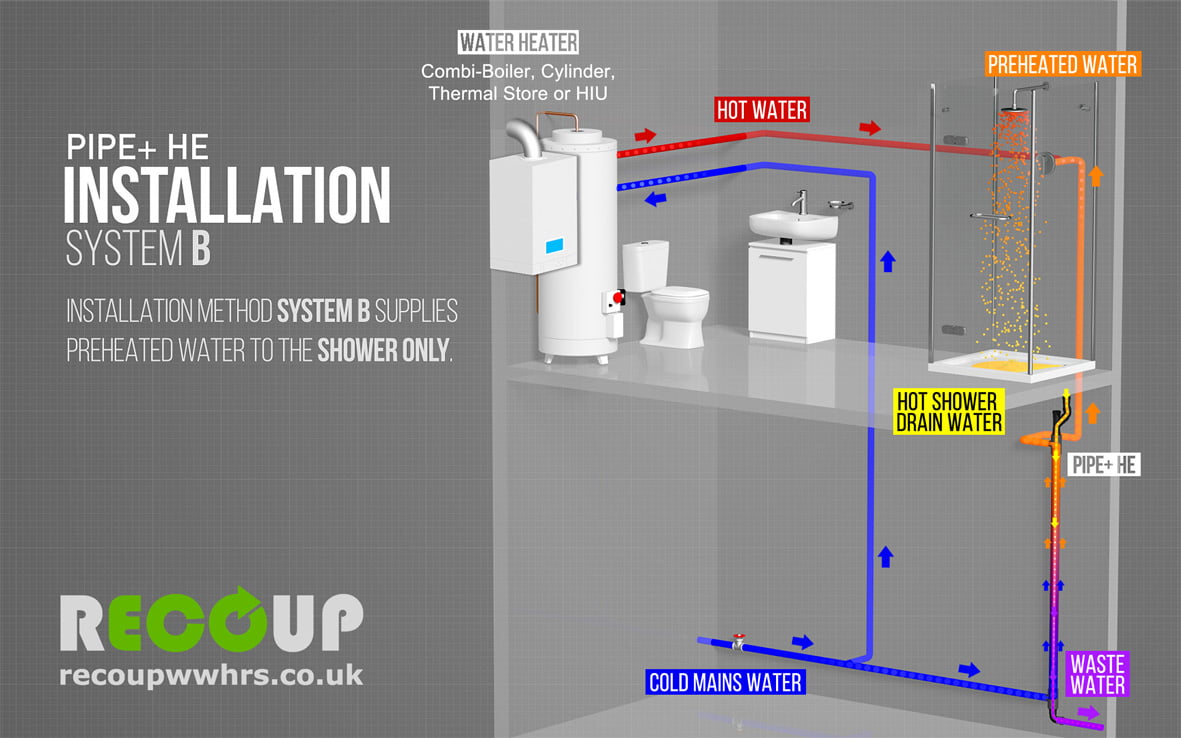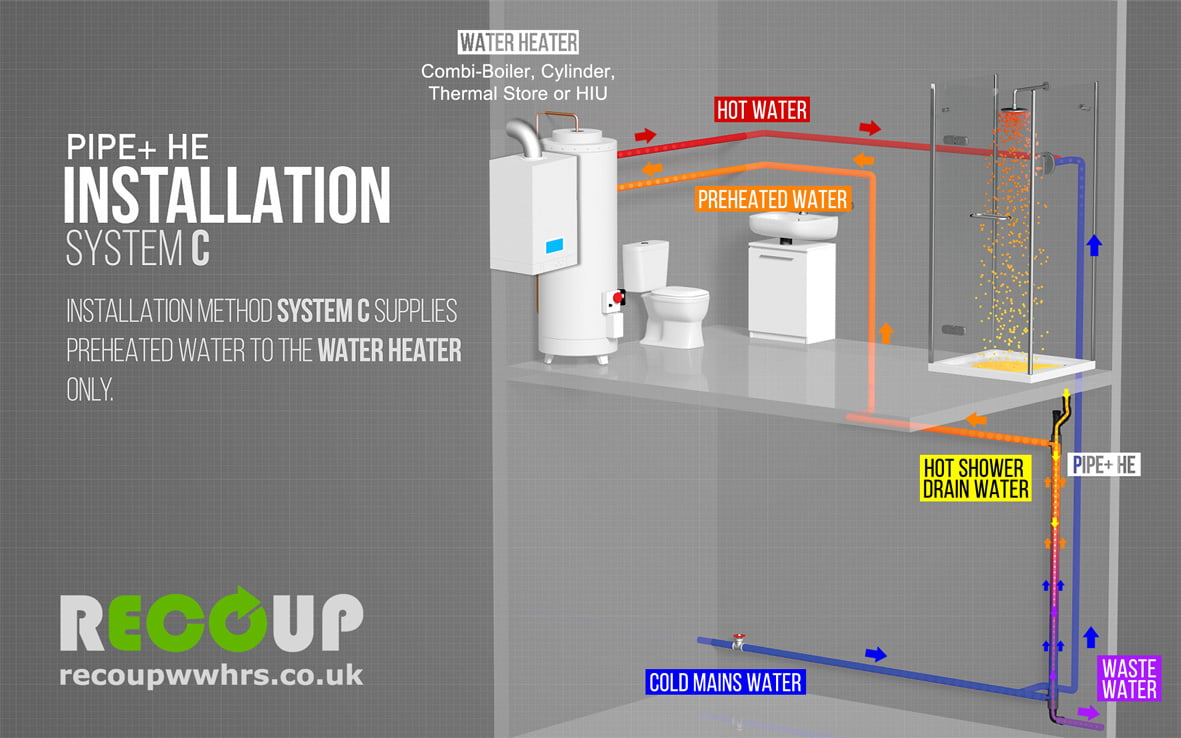Waste Water Heat Recovery for Showers
The efficiency of a Waste Water Heat Recovery System for SBEM Calculation

Compliance with Part L of the Building Regulations requires energy modelling of building designs in order to demonstrate low carbon performance.
This article aims to demonstrate the calculations used to represent WWHRS generated energy savings, as part of a passive design analysis for a new build hotel that was recently undertaken to gain BREEAM Ene04 credit.
**UPDATE JUNE 2019**
**WWHRS is now included in iSBEM v5.6a, and also included in the latest updates for IESve 2018 (feature Pack 2) and IESve 2019, as well as Design Builder**
See here: https://recoup.co.uk/uncategorized/recoup-wwhrs-now-included-in-sbem/
Background:
SBEM (Simplified Building Energy Model) is a calculation methodology used to define the CO2 emissions of the designed building and compare this to the target standard. It is an efficient and straightforward energy modelling tool to use and incorporates a wide range of building energy features.
DSM (Dynamic Simulation Model) employs dynamic thermal techniques that model the building’s thermal performance over time and on an hourly basis. This methodology is better able to model the relationship between the building and the local external environment. Particular strengths include detailing the effect of natural air movements, air temperature and ventilation strategies; overheating analysis and solar shading; HVAC plant sizing and selection; renewable energy feasibility studies; and fabric design.
WWHRS (Waste Water Heat Recovery Systems) for Showers is a simple passive energy recovery technology used to recover heat energy from waste shower water. WWHRS can simply be used with a ‘Fabric-first’ approach, often in place of other more expensive SAP measures such as Solar thermal, ASHP, PV or triple glazing, but for a fraction of the cost.
Furthermore, WWHRS requires no complex installation or commissioning; no ongoing or planned maintenance; no end-user interaction; and has no moving or mechanical parts – Just on-demand, passive energy savings of up to 67% with every shower.
Calculation:
This calculation has been undertaken to estimate the effect on overall CO2 emissions for the building (based on a passive design analysis project for a new build hotel, with a UK Low Carbon Consultant).A Dynamic Simulation Model (DSM) has been produced and provides the following statistics for Domestic Hot Water (DHW) based on the National Calculation Model (NCM) methodology.DHW Heating Demand = 1,059,846 kWh
NCM DHW Energy Consumption = 1,208,422 kWh*
A calculation was undertaken to assess the impact of Waste Water Heat Recovery for Showers (WWHRS) for this building. However, this is limited to DHW usage for showers.Total HW Demand for Showers = 262,873 kWh **
Total Energy Recovery for Showers = 105,620 kWh **
Efficiency of WWHRS = 105,620/262,873 = 0.402 (x100) = 40.2%
CO2 Reduction (WWHRS) = 0.216 x 105,620 = 22,814 kgCO2
The WWHRS recovery efficiency will now be applied to the total DHW heating demand as deemed by the SBEM calculation.% of Hot Water Demand (HWD) for Showers = Total HWD for Showers / DHW Heating Demand = 262,873 / 1,059,846 = 0.248
Heat Recovery Efficiency = % of HWD for Showers X WWHRS efficiency = 0.402 x 0.248 = 10% ***
SCoP= Seasonal Efficiency x Dwelling Efficiency = 0.95 x (1+0.1) = 1.045 ****
*NCM is standard usage profiles used for energy compliance studies and therefore NCM DHW Energy Consumption is the consumption of energy for Domestic Hot Water based upon standardised usage profiles.** Calculations carried out by Recoup_WWHRS with input from client/sector data & SAP defaults.*** Because the heat recovery is only for shower usage the total 40% efficiency cannot be applied to the total build DHW demand and therefore only a percentage can be applied based upon the amount of shower usage.**** SCoP – this stands for seasonal coefficient of performance – a term more familiarly used for heat pumps. However, it is a standard term within energy compliance software used for detailing the seasonal efficiency of the heating source.Recoup have a wealth of experience assisting designers, developers, consultants and specifiers incorporating WWHRS into commercial and residential developments.Please contact us for any further information.


